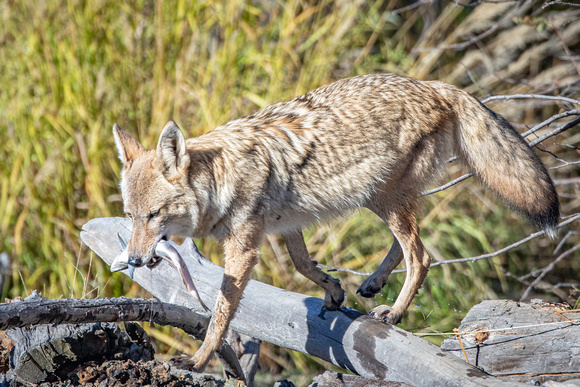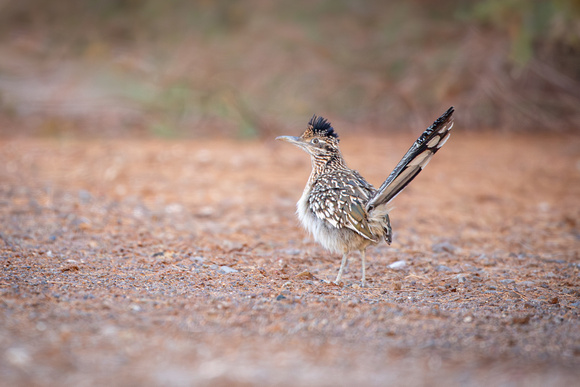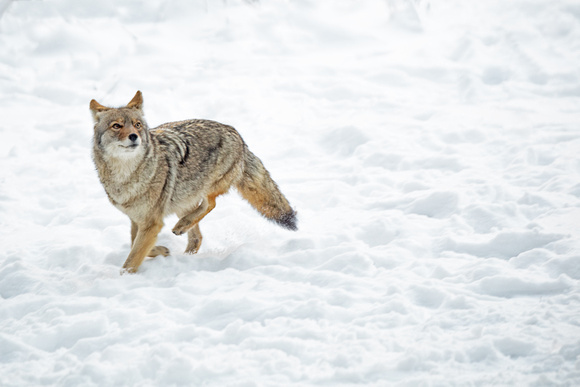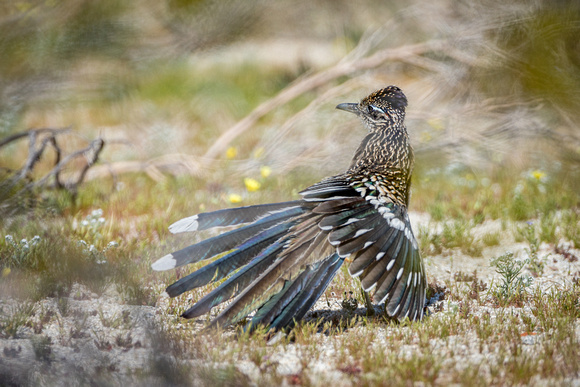The Coyote and the Roadrunner
The Coyote and the Roadrunner: Meep Meep
Text and photos by Heather Cline
I don't know about you but when I was a kid I loved watching the Looney Tunes cartoons on Saturday mornings, especially Wile E Coyote and the Road Runner. The wide variety of creative but 'not quite successful' schemes the coyote came up with in contrast to a bird that outwitted him but pretty much just running fast never got old.
I don't know why but this cartoon recently popped back into my head and it made me think of the real-life relationship between the Coyote and the Greater Roadrunner. I thought it would be interesting to explore that here, and if all this has you feeling nostalgic, you can still catch episodes on YouTube.
Predator vs. Prey
Coyotes and roadrunners live in the same habitat. The most common predators of the roadrunner include raccoons, skunks, hawks, domestic cats, and yes - coyotes. Coyotes are opportunists. If they can catch it, they will eat it! Roadrunners are successful predators in their own right, using quick bursts of speed to capture everything from insects to mice, lizards, and snakes.
 Greater RoadrunnerGreater Roadrunner in the California desert Greater RoadrunnerGreater Roadrunner in the California desert
Greater Roadrunner |
|
Speed
While the cartoon reflected the roadrunner outrunning the coyote in pretty-much every episode, in real life a coyote can run up to 43 mph - more than double the roadrunner who can reach speeds up to 20 mph. While this bird prefers to sprint over flying, they get airborne to escape a predator.
 CoyoteCoyote in the California desert CoyoteCoyote in the California desert
Coyote |
|
Habitat
You can find roadrunners in deserts, most commonly in the Sonoran desert with a mix of open ground and dense low cover. These birds do well in hot, arid environments. However, as human populations continue to spread into their habitats, they have adapted by moving into less arid environments and can often be seen at the edge of smaller towns and cities.
Coyotes, on the other hand, are widely disbursed throughout all of North America and some of Central America. They are one of the most adaptable animals to changing conditions and live in a variety of environments including deserts, swamps, tundra, grasslands, brush, and dense forests, from below sea level to the mountains. As populations have grown, they have also learned to thrive in urban areas which has increased human and coyote conflicts.
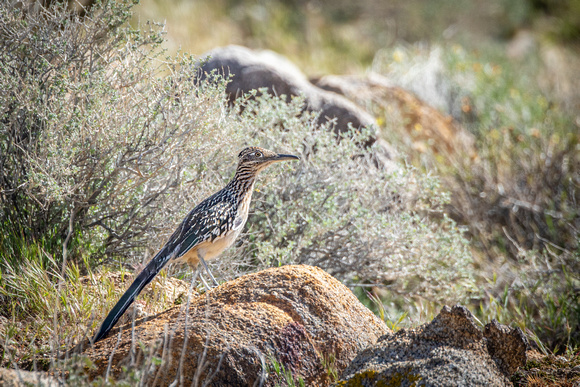 Greater RoadrunnerGreater Roadrunner in the California desert Greater RoadrunnerGreater Roadrunner in the California desert
Greater Roadrunner, California desert |
|
Mating and Raising Offspring
Both the roadrunner and coyote are dedicated parents. Roadrunners mate for life and both participate in nest building, egg incubation, and feeding the young. Offspring can leave the nest as early as 18-21 days! Coyotes also raise young together, using dens to protect pups from predators. Although pups are able to eat meat and move around by 1 month of age, it won't be until they reach 6 months that their mothers teach them to hunt for themselves. Shortly after this training period, pups will venture out on their own but some may stay with the parents, becoming part of the family group.
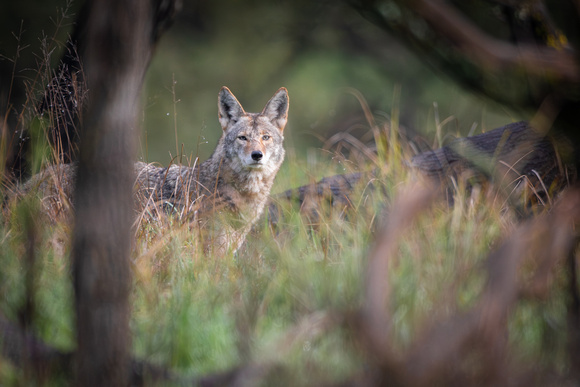 CoyoteCoyote in the Sacramento valley CoyoteCoyote in the Sacramento valley
Coyote |
|
Depending on where you live, you may have the opportunity to see one or both of these characters out and about. If you ever see one with an anvil and rope creating a booby trap for the other, please call me immediately because I really need to photograph that!
